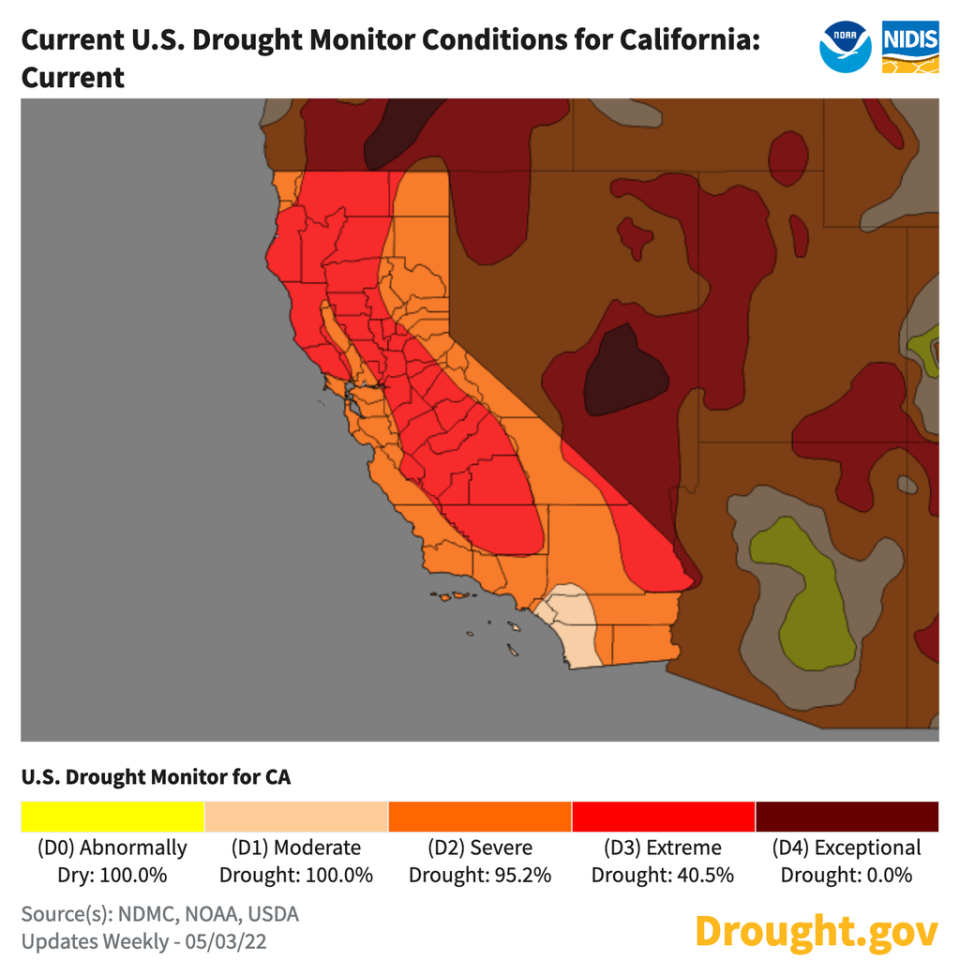California’s biggest reservoirs at ‘critically low levels’ before dry season
Water levels in California’s two biggest reservoirs have dropped to “critically low levels” as the state faces another dry summer amid ongoing drought, according to a new report.
Precipitously low water levels have already spurred mandatory water conservation measures in parts of the state.
The new report, from the US government’s drought monitor, notes that Shasta Lake, the largest reservoir, is at just 40 per cent capacity. Lake Oroville is at 55 per cent capacity.
These numbers come just as the state enters the driest part of the year — most precipitation in California comes between the months of October and April.
California is on year three of intense drought conditions, which comes amid a decades-long “megadrought” in the western US.
The government drought monitor notes that 95 per cent of the state is experiencing “severe drought.”
These conditions put direct pressure on the state’s water resources. Around one-third of California’s water comes from melting snowpack in the Sierra Nevada mountains — and this year, officials have recorded distressingly low snow levels throughout the spring.
Last week, water officials recorded no snow at one of their regular monitoring sites south of Lake Tahoe.
In response, state and municipal water agencies have urged both voluntary and mandatory water conservation. Last month, officials in southern California declared a water shortage emergency and restricted outdoor watering to one day per week for around six million people in Los Angeles, Sen Bernadino and Ventura counties.

And it’s not just California facing the squeeze. The new report from the US drought monitor notes that Lake Mead — the country’s largest reservoir, on the border of Arizona and Nevada — is at 31 per cent capacity.
Lake Powell, the second-largest reservoir in the country, on the border of Arizona and Utah, is at just 24 per cent capacity.
Both of those reservoirs are on the Colorado River, which flows through the US southwest and is under immense pressure from drought and overuse.
Water issues in the American West are only likely to get worse at the climate crisis continues.
One study found that the climate crisis will help fuel drought conditions — and the California Department of Water Resources warns that the state’s snowpack is expected to decline by up to 65 per cent by 2100.

